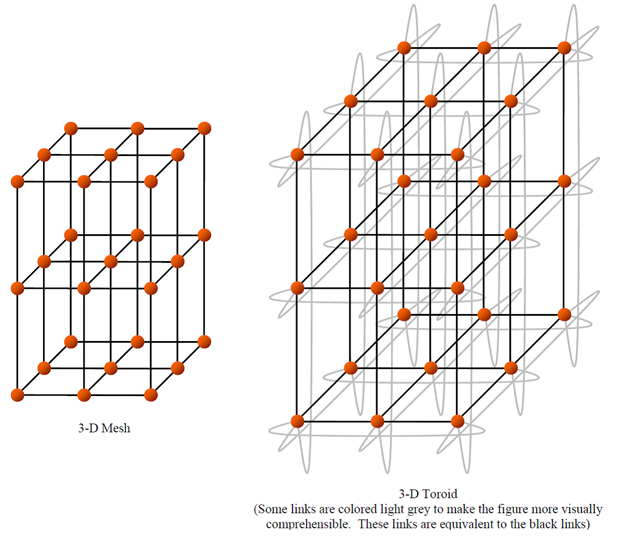Joint Architecture Standard Overview Profile
3 D Meshes and 3 D Toroids
Domain(s)
Space
System(s)
Satellite
Profile(s)
CH, COMM, EXP, PS, RP, SMAC
3-D meshes and 3-D toroids are similar to 2-D meshes and toroids, except the 3-D mesh/toroid is expanded along the Z-axis to provide another dimensional layer of nodes. In the case of the 3-D toroid, the topmost nodes (along the new Z-axis) are connected to the bottommost nodes (see Figure).

3-D Mesh and 3-D Toroid
The advantages and disadvantages of 3-D meshes and toroids are similar to those of the 2-D meshes and toroids, but are amplified proportionally with the height of the added dimension. However, due to the added dimension, there is added redundancy and even more paths and loops within the network. 3-D toroids have a fixed degree of 6 for all nodes.
- Advantages (3-D Mesh): Simple layout and easy to construct. Many redundant paths exist between most nodes.
- Disadvantages (3-D Mesh): Bottlenecks may exist in the center of the network. Corner, edge, and center nodes all have different degree. Fair worst-case failure rate. One of the easier topologies to bisect.
- Advantages (3-D Toroid): Extremely reliable topology with reasonable performance. Fixed node degree of 6 for all nodes.
- Disadvantages (3-D Toroid): Link placement is not quite as efficient as some other topologies with the same number of links. Thus average path length and diameter are higher than other topologies with the same link count.